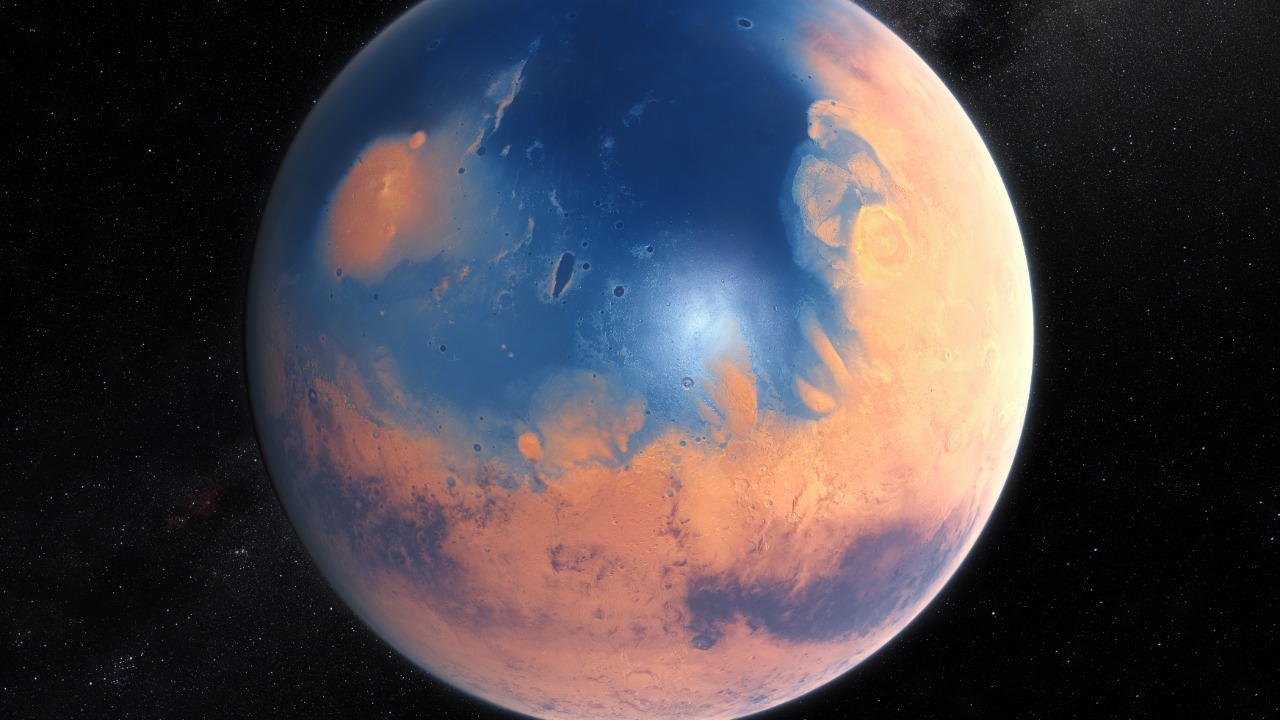
Recent discoveries have unveiled compelling evidence suggesting that Mars was once covered by a vast ocean. This conclusion is drawn from satellite imagery and rover data analyzed by scientists in 2025. The presence of ancient shorelines and sedimentary deposits visible from space has further strengthened this theory, offering a fascinating glimpse into the planet’s watery past. These findings are crucial for understanding Mars’s geological history and its potential to support life.
Geological Evidence of Ancient Oceans
The surface features of Mars provide significant clues about its past, particularly the existence of ancient shorelines. These features strongly indicate that a large ocean once existed on the planet. According to CBC, the evidence of these shorelines is compelling, suggesting that Mars had a more Earth-like environment in its distant past. The geological formations observed by scientists are consistent with those formed by large bodies of water, reinforcing the idea of a Martian ocean.
In addition to shorelines, sedimentary deposits found by rovers further support the presence of water bodies in Mars’s past. These deposits, as reported by VOA Learning English, are similar to those found in Earth’s aquatic environments, indicating that Mars once had conditions suitable for sustaining large bodies of water. The analysis of these sediments provides critical insights into the planet’s hydrological history and its potential to harbor life.
Satellite Imagery and Rover Data
Advanced satellite imagery has played a pivotal role in uncovering visual evidence that supports the existence of a vast ocean on Mars. As detailed by The Debrief, these images reveal features that are unmistakably linked to ancient water bodies. The ability to observe these features from space has provided scientists with a broader perspective on the planet’s geological history.
Data from Mars rovers have also contributed significantly to this understanding. The rovers have identified features resembling “vacation-style” sandy beaches, suggesting a once water-rich environment. According to Firstpost, these findings indicate that Mars may have had conditions similar to those found in coastal regions on Earth. This discovery not only supports the theory of a Martian ocean but also highlights the planet’s potential for past habitability.
Scientific Analysis and Interpretation
Researchers have meticulously analyzed the data collected from both satellite imagery and rover missions, leading to the hypothesis that these features are consistent with the presence of a large body of water in Mars’s geological history. The analysis, as reported by CBC, suggests that the planet’s surface was shaped by water activity, which has left behind distinct geological markers.
Studies conducted in 2025 continue to build on this evidence, offering a clearer picture of Mars’s watery past. These studies, highlighted by MSN, are crucial for understanding the planet’s climate history and its potential to support life. The ongoing research aims to refine our understanding of Mars’s environmental conditions and the implications for future exploration.
Implications for Future Mars Exploration
Understanding Mars’s hydrological history is crucial for planning future exploration missions and potential human settlement. The presence of ancient oceans may offer insights into the planet’s climate history and its capacity to support life. As noted by VOA Learning English, these findings are essential for developing strategies for future missions that aim to explore Mars’s potential for habitability.
The discovery of ancient oceans on Mars has significant implications for future exploration. It not only enhances our understanding of the planet’s past but also informs the search for life beyond Earth. The insights gained from these studies, as reported by The Debrief, will guide future missions in exploring the planet’s surface and subsurface, potentially uncovering more evidence of past life and informing the development of technologies for human exploration.